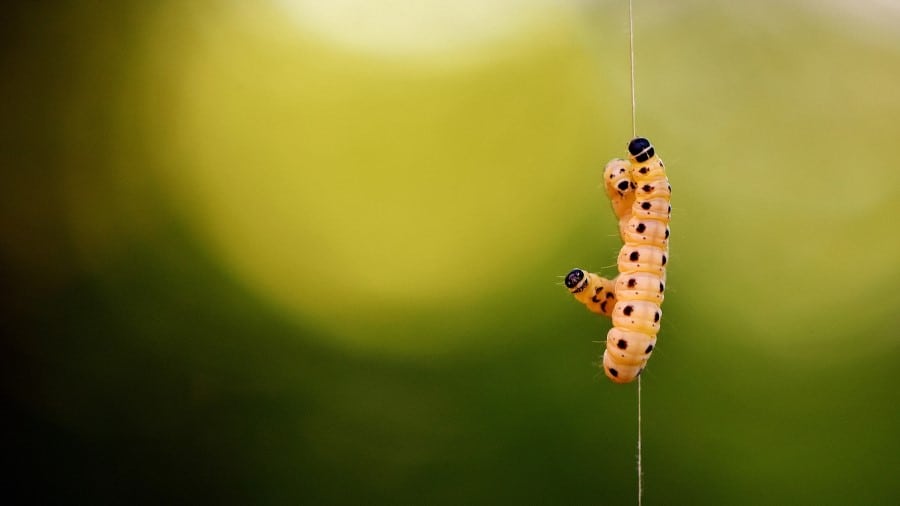
Waxworms are so fat and plump that it feels like feeding butter to chameleons when they eat it. Makes you wonder if waxworms are supposed to be fed to chameleons in the first place. Can chameleons eat waxworms or do they pose a danger to them?
Chameleons can eat waxworms but only occasionally as a treat. Waxworms barely have any nutrition in them and are full of fat. They should be used to fatten up your chameleon if it’s underweight but nothing more.
Waxworms have been used to feed reptiles for a very long time. They can be found in huge quantities in many pet stores and have been included in the diets of many pets just in case they need a little more weight. With that said, you shouldn’t consider feeding chameleons waxworms too often.
How Often Should Waxworms Be Fed to Chameleons?
Waxworms should only be a treat for a normal healthy chameleon and nothing more. This should be kept at a minimum depending on how much your chameleons like waxworms.
Some may like it once every 3 months or even once a month, but it should never be more than that. These grubs are nothing but fat and have barely any nutrition in them, which puts your chameleon at risk of being overweight.
Chameleons need a little fat so that they can function properly and keep themselves warm during colder times but nothing in excess. An overweight chameleon can have a lot of problems and it’s detrimental to their health, so you should keep them at a healthy weight.
With that said, if your chameleon is underweight, waxworms can be considered though….
Why Should I Feed An Underweight Chameleon Waxworms?
As I’ve mentioned before, it’s important to keep your chameleon at a healthy weight. Anything on both sides of the extremes will cause them health issues.
So, a balance between the two is needed for your chameleon’s longevity. Underweight chameleons will have just as many problems as overweight ones, all of which causes them to die over time.
If you’d like to know more about underweight chameleons, here is an article that discusses it for your info. Since waxworms are just globs of fat, they can be fed to underweight chameleons more often.
Still not too often though, as you may risk your chameleon getting too fat too soon. They need time to slowly adjust to their weight, so it’s better to stretch it over a longer period of time.
If normal chameleons can eat waxworms once a month without major issues, you can try to feed an underweight one twice a month or even once a week depending on their preference and target weight.
Once your chameleon’s weight is right, you should start to pull back a little on the waxworms so that they don’t go over the scale instead.
Can I Feed My Chameleon Dead Waxworms?
Dead food will always start to lose its nutritional value and water immediately after its death. With waxworms having such meager nutritional values in the first place, there are hardly any reasons for you to consider feeding your chameleon dead waxworms.
Not only that, but there is the risk of not knowing how the waxworms died. If the waxworms died of disease or infection, they will be transferred over to your chameleon as they chow down on them.
That just puts your chameleon at unnecessary risk. Dried waxworms, on the other hand, are processed dead waxworms. They won’t retain their water content, but the fat will still be intact after drying.
This removes the risk of pathogens attacking your chameleon as they will be cleansed beforehand. Even so, waxworms, in general, should only be fed very sparingly regardless of it being dried or not, simply because their fat content is too high.
Can I Freeze Waxworms to Feed My Chameleon Later?
Yes, it is possible to freeze waxworms but it isn’t recommended. Waxworms are known to turn black when frozen and this might be due to how fast they die under extreme conditions.
This is why even when storing it in the fridge, waxworms should never be placed in the coldest areas. If you are looking for frozen waxworms, it is better to buy from a source instead of doing it yourself.
They have techniques to flash freeze the waxworms before they have a chance to decay, which eliminates that possibility. These frozen waxworms will most likely require you to reheat or boil them up for use.
This process will clear them of any bacteria or pathogens that might have survived during freezing. After that, they will be safe for your chameleon to consume.
Conclusion
Waxworms can be fed to chameleons but only sparingly due to the high-fat content. They barely have any nutritional value other than fat which can cause a problem when too much is fed, causing the chameleon to become overweight.
However, if your chameleon is underweight, you should consider feeding it waxworms to fatten them up a little to ensure that they can function properly. Underweight chameleons are very susceptible to damages and can barely hold themselves up.
Personally, if you asked me, I would say to feed your chameleon the right number of waxworms. If your chameleon is a perfectly healthy one, the right number would be zero.


